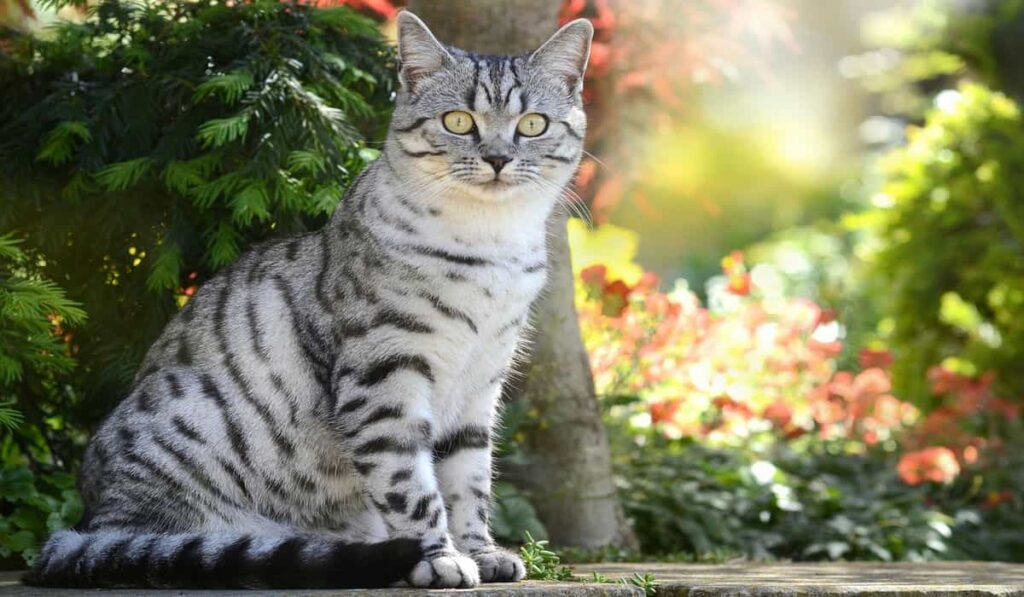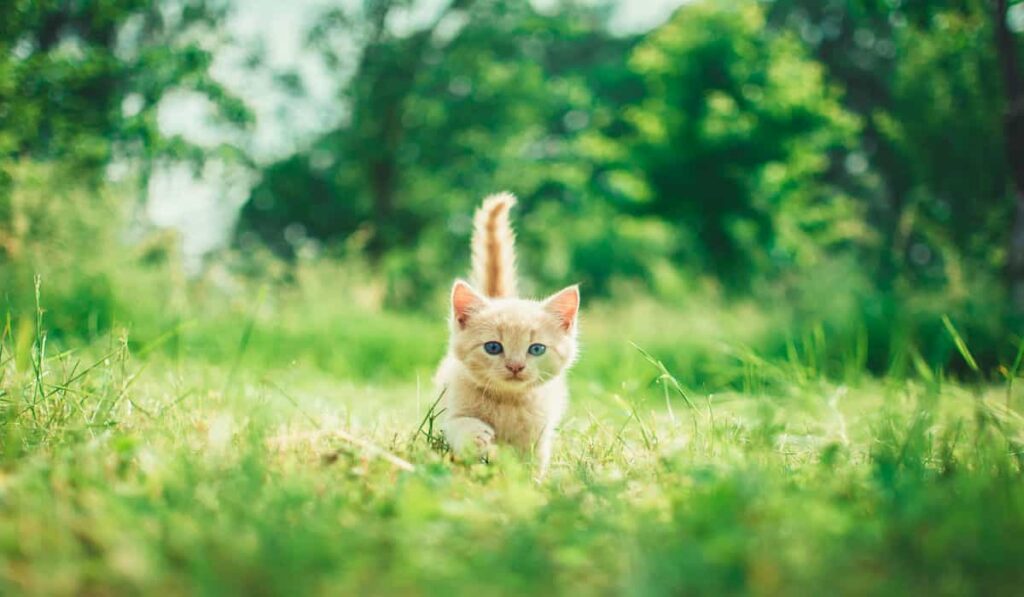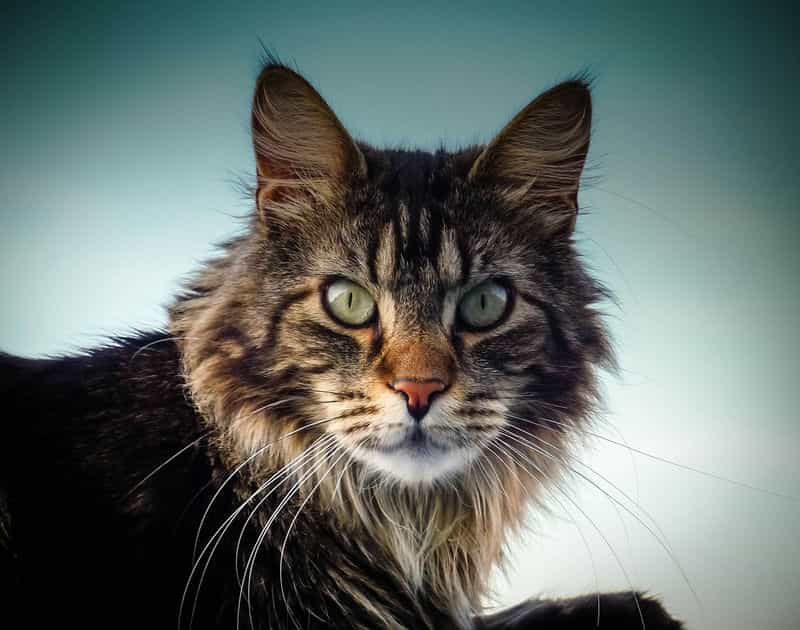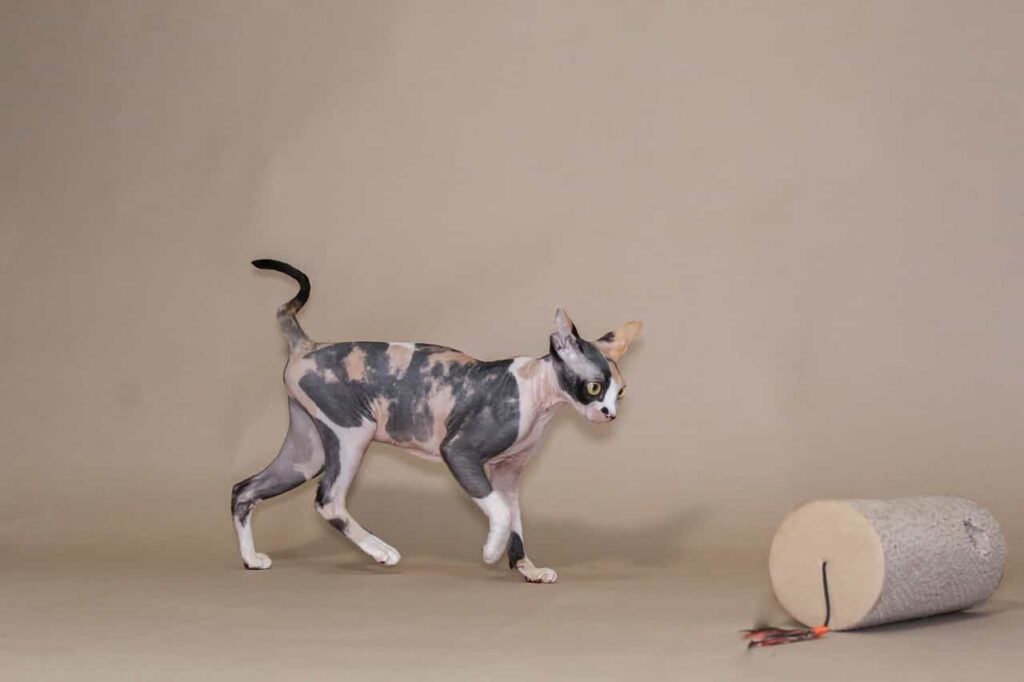You will be puzzled looking at how Ocicat resembles Ocelots. Their spotted coats give a wild and adventurous vibe. A wild look with normal and social behavior. What a combination!
Though they look wild and ferocious, they’re a very friendly, social, and affectionate breed. Ocicats are interbred with Abyssinian, Siamese, and American Shorthair cats but look totally different from their ancestors. The breed was an error in Cat Fancier’s Association.
In fact, Ocicats are a group of cats that looks wild, but there is no wild DNA exists in their gene pool at the present time. If you are a new owner of an Ocicat or thinking about adopting it, then the article is only for you. Keep reading.
Table of Contents
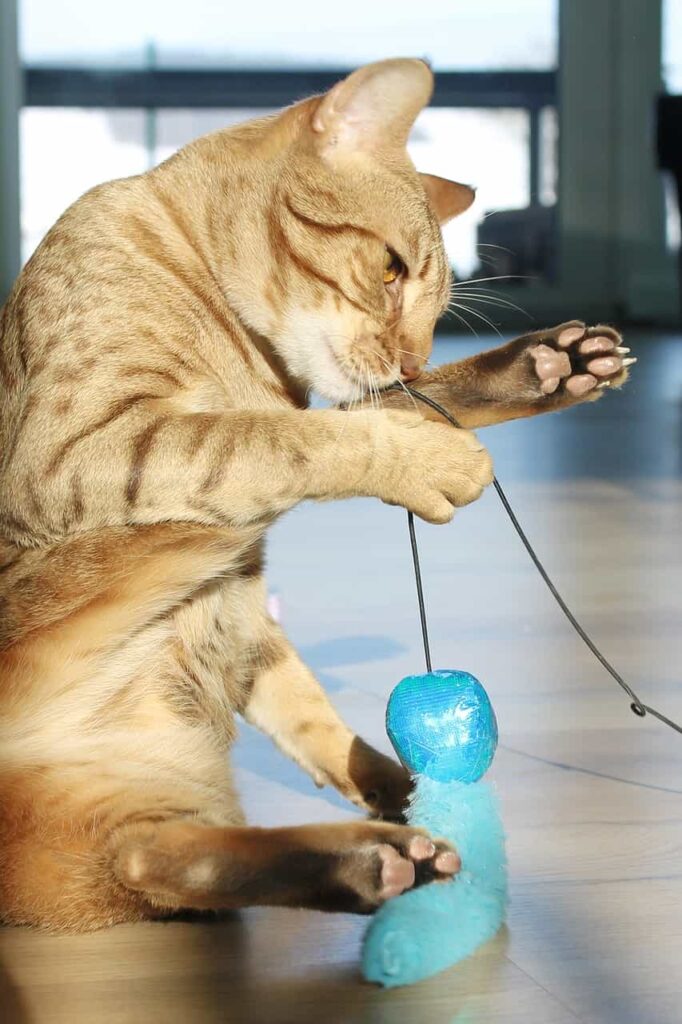
Breed specialty of Ocicat:
Personality:
Energetic, affectionate, outgoing, intelligent, active, playful, friendly towards children, strangers, and other pets, and also dependent.
Coat patterns:
Spotted and Tabby.
Coat colors:
Cinnamon, Fawn Silver, Chocolate, Lavender, Blue, Tawny, smoked, spotted Tabby, blotched Tabby, Ticked Tabby.
Coat length:
Short
Length:
Weight:
8 to 15 lbs (female cats can be up to 12 lbs)
Eye colors:
Any color except Blue.
Life Expectancy:
Up to 15 years (can be 18 years if taken good care of and stay indoors.)
Hypoallergenic:
No
Shedding and grooming level-
Low
Origin:
Thailand (Siam), Ethiopia (Abyssinia), USA.
Origin of the Ocicat breed:
A new breed- that wasn’t interbred before 1960. The breed was an unexpected produce between a Siamese and An Abyssinian cat. Mrs. Daly wanted an Abypoint Siamese, and she interbred the two cats in Michigan state, USA first generation was born in 1964.
Mrs. Daly’s daughter Virginia Daly named the Kitten Tonga and the breed Ocicat because it looked like Ocelots. Tonga was neutered and sold as a pet.
When Detroit newspapers published news about the spotted breed, there was a geneticist named Dr. Clyde Keeler, who expressed his desire for a domestic cat that would mimic some of the vanishing wild species.
So, the interbreeding was repeated, and the true breed of Ocicat was really born.
The breeders were interested in the new breed and added American Shorthairs in this interbreeding. They interbred American Shorthairs with Ocicat for a larger bonding and added Silver color with the existing colors.
Cat Fancier’s Association recognized Ocicat as a new breed in 1966. The breeding continued for 20 years to develop the breeding program and the support of provisional status.
Ocicat was taken to a Championship in 1987, and nowadays, Ocicats are available all over the world.
The appearance of Ocicat:
Ocicats are just Tiger-looking and come with sleek and Athletic bodies. They’re very slim. Their spotted coat gives a wild vibe.
Long and solid body with depth and fullness.
Strong bones and muscles and medium in size. Females are smaller than males.
Head:
The skull is medium and proportionate to the body, a bit curvy from cheek to muzzle. The nose rises like a bridge gently to the eyebrow.
The chin is strong the jaw is powerful for proper biting. An arching neck holds the head with a non-severe whisker pinch.
Neck:
The curved neck carries the head.
Ears:
The ears are not so large and alert, situated in the outer direction and corner of the head. You’ll notice an imaginary line horizontal line is drawn across the brow, and the ears and ears are situated at a 45-degree angle.
Eyes:
Most cats have Almond-shaped eyes, and Ocicats are not exceptional. Their Large, beautiful, curious, floating, and intelligent eyes can be any color except Blue.
Body:
Just like an athletic body- long and solid with depth and fullness. Substantial bones with developed muscles with a deep chest and slightly sprung ribs. The back is slightly higher on the rear with a reasonably level flunk.
Legs and paws:
Well-muscled and medium-long legs are proportionate to the body. Fit and oval toes have 5 fingers at the front and 4 at the back.
Tail:
The tail is long and slim, tipped at the middle point of the body.
Coats:
Short, silky, smooth, and satiny-textured coats are gorgeous and come in more than 6 colors.
Temperament and nature of the breed- Ocicat:
Ocicats are very active, playful, intelligent, social, and affectionate towards their owners. They want to tell you about their day but don’t bore you with their meowing.
They’re talkative like their Siamese ancestors but not too talkative. They also love to perform tap dances like their Abyssinian ancestors and amuse you.
They’re friendly with children and other people but make a special relationship with one person in the house as they’re very active, so they need to play more.
They love to play and exercise with various toys and cat trees. They are very intelligent buddies.
Ocicats learn tricks very quickly and respond by calling their names. They also follow your commands and beg for food. They need the attention of their owner more than any other breed and are ready to give company to the human at any length of time.
Caring, grooming, and exercise of Ocicat:
Ocicats are low-maintenance cats, just like other cats. Just a one-time weekly brushing is enough to prevent dead furs. When you decide to give a bath to your Ocicat, choose the right shampoo according to their coat colors and tones.
You can choose Bronze-tone shampoo for Cinnamon, Brown, and Chocolate spots, Whitening Shampoo for Silver coats, and Pearl-tone for Blue, Fawn, and Lilac coat colors.
Thooth-brushing and nail streaming are, as usual, like other cats. Besides, You have to provide them so many toys and long cat trees and at least two times play sessions daily.
Keep in mind that your pet should not get obese. Listen to your Ocicat when they call you. Supplements can increase the brightness of the coat.
Special consideration for Ocicats:
Ociacats are happy and comfortable in a busy household with children and other pets. They’re active, social, and able to learn house rules and tricks. Though they aren’t very vocal and playful, they make themselves vocal when they need to or during playing time.
Ocicats don’t like to be alone. They do their best when someone is around them. Ocicats are allergic to dust, Pollen, or mold. It causes itchy skin in the legs, stomach, face, and ears.
If grooming is excessive, then it can happen. There are so many treatments available to treat Ocicats.
Health and problems of Ocicat:
Normally Ocicats are a healthy breed. But sometimes they’re prone to some health diseases and issues. Like as-
Dental diseases:
Gum problems and holes in the teeth. Most cats have this problem.
Parasites:
All kinds of worms, bugs, fleas, ticks, and ear mites can infect her skin and ears. Hookworms, Roundworms, Heartworms, and Whipworms get into the system by drinking dirty and unsafe water, walking the contaminated soil, or being beaten by infected mosquitos.
Vaccine-preventable infections:
You can save your pet by vaccinating from those diseases- Rabies, Calicivirus, Panleukopenia, Rhinotracheitis, etc.
Heart diseases:
Hypertrophic Cardio Myopathy (HCM) and Dilated Cardio Myopathy (DCM). When heart walls thicken, and blood circulation faces difficulties, it is called Cardio Myopathy.
Progressive Retinal Atrophy (PRA):
An inherited eye disease- that goes to blindness with time. There is no treatment or cure for PRA. You can be cautious about the disease from the very beginning.
FLUTD and Renal failure:
Feline Lower Urinary Tract Disease happens when your pet urinates outside the litterbox. That means the Kidney is going to fail.
Arterial Thromboembolism:
When blood clots grow in the blood vessels and block the way of pumping blood and circulating it to the body, it is called Feline Aortic Thromboembolism.
Besides, your Ocicat can suffer from Diabetes, Allergies, and Thyroid problems. So you must take care of your pet’s health. A regular vet visit is mandatory after every 6 months.
Diabetes and allergies:
Cats have the same risk of being Diabetic and allergenic.
Emergency situations and what to watch for:
Your cat will show you some signs of serious illness. Never ignore them. If your pet-
- Scratching or shaking the head, tendring the ears,
- Ear discharge occurring.
- Cloudiness, Redness, or any kind of abnormality is seen in the eyes.
- Discolored urine or difficulties urinating.
- Getting tired of playing or exercising and labored or open mouth breeding.
So, always take your Ocicat to the vet every 6 months and conduct a DNA test immediately after adoption.
Food and nutrition that need to be provided to the Adorable Ocicat:
An Ocicat eats 10-15 times a day with few nibbles at a time. But when they get older, you must make sure that the feeding time should decrease. The digestion power and activity decrease with age.
So, feeding time and the amount should be proportionate to avoid obesity.
Provide your kitty with enough protein and 41 types of nutrients. A highly qualified feline diet is a must for your Ocicat. There is separate kitten food available in the market. So, provide a kitten diet for your kitties.
Some facts about Ocicats:
- Ocicats look wild but are very sociable and 100% domestic cats.
- They’re an accidental breed.
- Ocicats are conversation starters and not shy at all.
- The only breed that can dance.
- True lovers at heart.
- They have a dog-like personality.
Where can you get better treatment for your Ocicat:
- Ocicat- VCA Animal Hospitals.
- Feline Dental Disease- Cornell University College for Veterinary Medicine.
- Amyloidosis in Cats- VCA Animal Hospitals.

